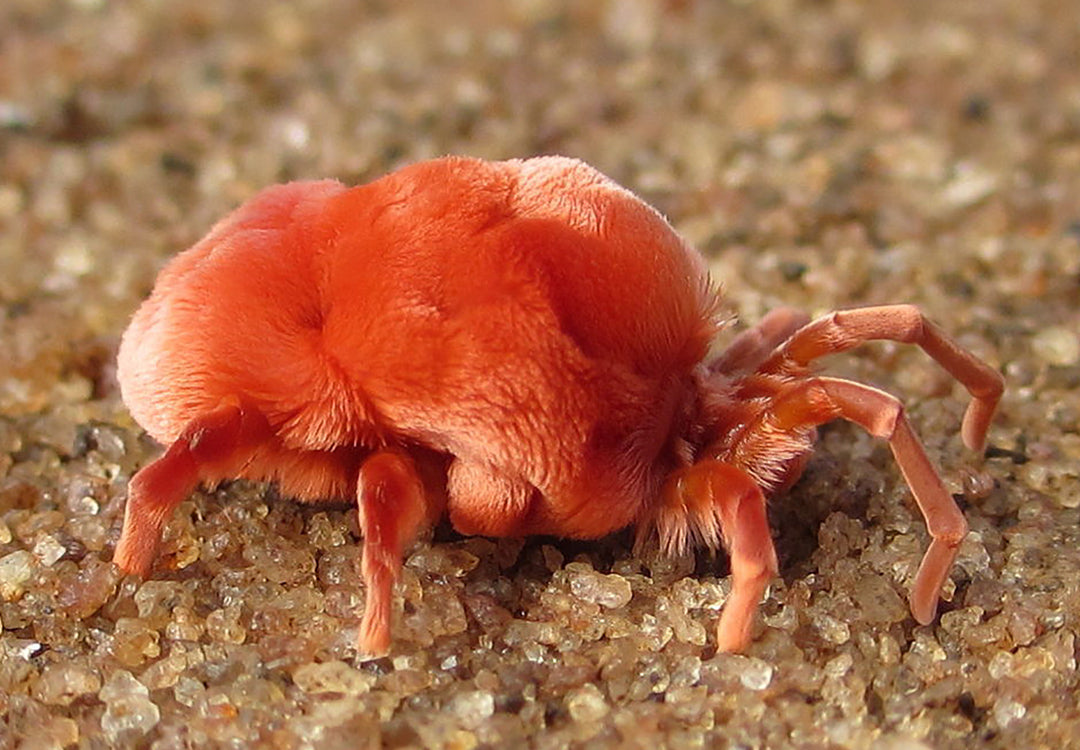
If you’d like to encourage a wider variety of organic life in your soil, there are a few key things you’re going to want to provide for them in the soil.
Healthy soil-dwelling organisms want access to air, water, organic matter, minerals, enough light (but not too much), the right pH, the right temperature, as well as “companion” organisms (which are other friendly critters, also called symbiotes or symbiotic organisms).
These soil-dwellers are integral to the web of life: they break down nutrients for plants and other organisms and provide food for higher organisms.
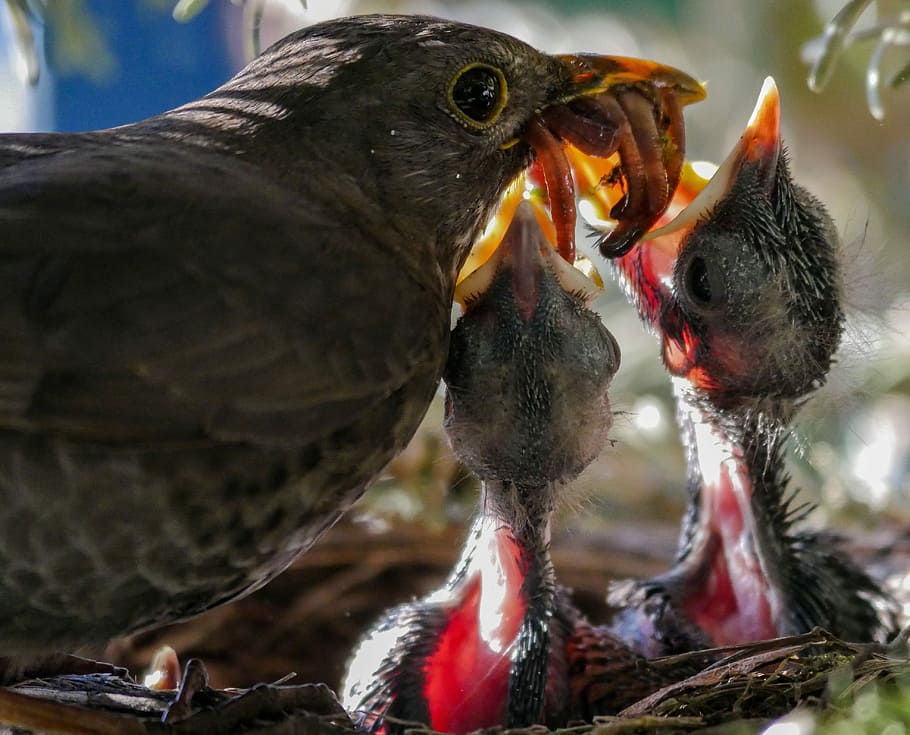
If you want to see birds, feed the soil! All life exists in a complex web and without soil-dwellers like worms, the whole system collapses. Image source
This article is a kind of appreciation post for the creatures that keep our soil and plants alive, and by extension provide the right conditions that keep all of us alive as well.
We’re obviously not going to explain all of the life that goes on underground in this 4,000 word article, instead today we’re just touching on a few of the key players and not concerning ourselves too much with the fact that we’ve only scratched the surface (so to speak) when it comes to soil life.
We are also not going to go too deeply into other aspects of soil health. If you’re interested in learning how to build good soil I recommend also reading another post that I’ve written entitled “What Is Healthy Soil And How Can We Build It”. Many of the terms discussed here are discussed in that post.
Why Should We Encourage Organisms Within The Soil?
Plants do not exist in a vacuum all by themselves. In nature, they exist within a complex web filled with friends and foes, big and small, and all of these organisms have evolved side-by-side and depend on one another to survive.
There is an amazing range of life forms in the soil. Some of them can be seen, but the vast majority of them go unseen. A truly healthy plant is one that has a lot of friends that it looks after, and that look after it.
Beneficial organisms help break down organic materials and minerals into forms that plants are able to consume, and without them plants are reliant on water-soluble nutrients alone which are not always common in nature.
And don’t think we’re only talking about the organisms that eat dead plant material, either! Predatory organisms such as “beneficial” nematodes, spiders and birds that eat those earthworms we tried so hard to encourage actually deliver high amounts of nitrogen to the soil through their faeces.
This in turn encourages more organisms and plants that feed other organisms, that then feed the predators in what we’d like to hope will be an endless cycle.
As gardeners, one of the absolute best things we can do for our plants’ health is to create an environment that high numbers of biodiverse (different types of) beneficial organisms will enjoy occupying, and encourage new organisms to arrive and join in the soil’s food web.
Beneficials vs. Pests
Some of the main players are earthworms, insects, arachnids, nematodes, fungus, bacteria and viruses.
There are so-called “beneficial” and “pest” varieties of all of these organisms (except earthworms which are pretty much all beneficial for plants).
These terms are invented by humans, but a truly healthy environment balances all sorts of organisms that assist healthy plants, and bring death to the weak ones.
The best way to strengthen our plants is to choose varieties that will be strong in our area, and rather than trying to fight nature to make the wrong plant for the area survive. In other words, choose the sort of plant that loves the soil you plant it in; don’t plant a cactus inside a pond, and then blame the fungus for causing it to rot.
Weak plants are easy prey to pests, and if you know your area is especially susceptible to certain kinds of pests consider checking if the plants you intend to buy are favourites on their menu. If you’ve bought a mint plant before and it was massacred by munching pests, consider buying a different plant next time because there’s a high likelihood that the same pest has eggs planted around just waiting for a new mint plant to arrive.
We want to plant the right plant in the right place because we are trying to build gardens and landscapes that get easier to maintain over time; we don’t want to fight against nature every step of the way because that’s a battle we aren’t going to win in the long term.
Instead, we should do the best we can to improve the soil health, and plant the type of vegetation that will do well in the environment we have to offer.
This way, the organisms will be able to work with our plants instead of against them in order to allow a more appropriate plant to thrive.
“Pests” exist to remove weak plants, and to provide a food source for “beneficial” organisms, so if we take this view suddenly we can see that there really is no such thing as a “pest” except in our imagination.
Worms
The hierarchy of group classifications goes like this: Kingdom, Phylum, Class, Order, Family, Genus, then Species.
Worms are in the animal kingdom, and the phylum that true worms belong to is called Annelid. There are some bizarre relatives within this group including the marine coral-like feather duster worms and terrifying predatory bobbit worms.
When we speak about worms in the soil, however, we’re usually talking about one of the many species in the earthworm subclass Oligochaeta, which has four main “families” that are home to earthworm members that feed on dead plant material, algae, fungi and bacteria.
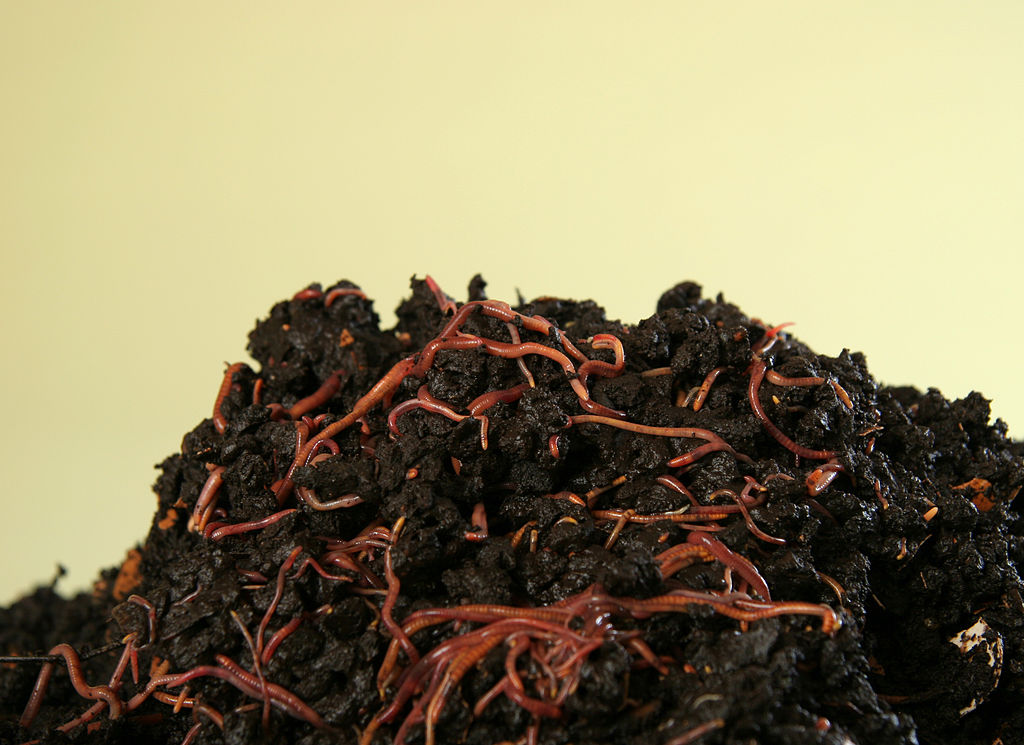
Earthworms love to eat organic material and break it down. Image source
These guys aren’t a threat to plants at all, and there are few garden critters that are as well-loved as the humble earthworm.
They’re hailed as one of the best soil architects because they improve drainage and structure. They make it easier for roots to grow, they unlock nutrients for plants, and their coveted faecal matter, a.k.a. “worm castings” or “vermicompost” boosts microbial activity in the soil.
It’s true, earthworms are amazing and having a lot of them is an indicator of good soil health.
However, as much as we all love earthworms let’s not forget about their various co-workers in the soil that aren’t as well-appreciated and sometimes even are detested.
Molluscs
Most molluscs (in the Mollusca phylum) tend to live in aquatic (water) environments and include members such as oysters, clams and squid.
Snails and slugs are slimy terrestiral (land-dwelling) molluscs that feed on living and dead organic material, including plants, lichen, fungi, and even dead animals. They can bury within the soil, especially during temperature extremes where they can enjoy cool, moist conditions, and it’s estimated that there are only 5% of slugs above the soil at any time.
You can usually tell when they’ve been around because of the tell-tale shiny trail of mucus they leave behind.
We often think of them as plant pests, and they are because they have a tendency to eat the bark, roots, leaves and flowers of plants that we would prefer they would leave alone.
But they’re also a beneficial type of organism in our gardens because they assist in the breakdown of dead organic material and garden debris. Their excrement is full of beneficial nutrients and organic matter that encourages other beneficial organisms and feeds the plants.
Eggs laid by snails and slugs provide a food source for bugs and other critters, and the living molluscs themselves are food for a lot of animals including insects, birds, mammals, reptiles and amphibians.
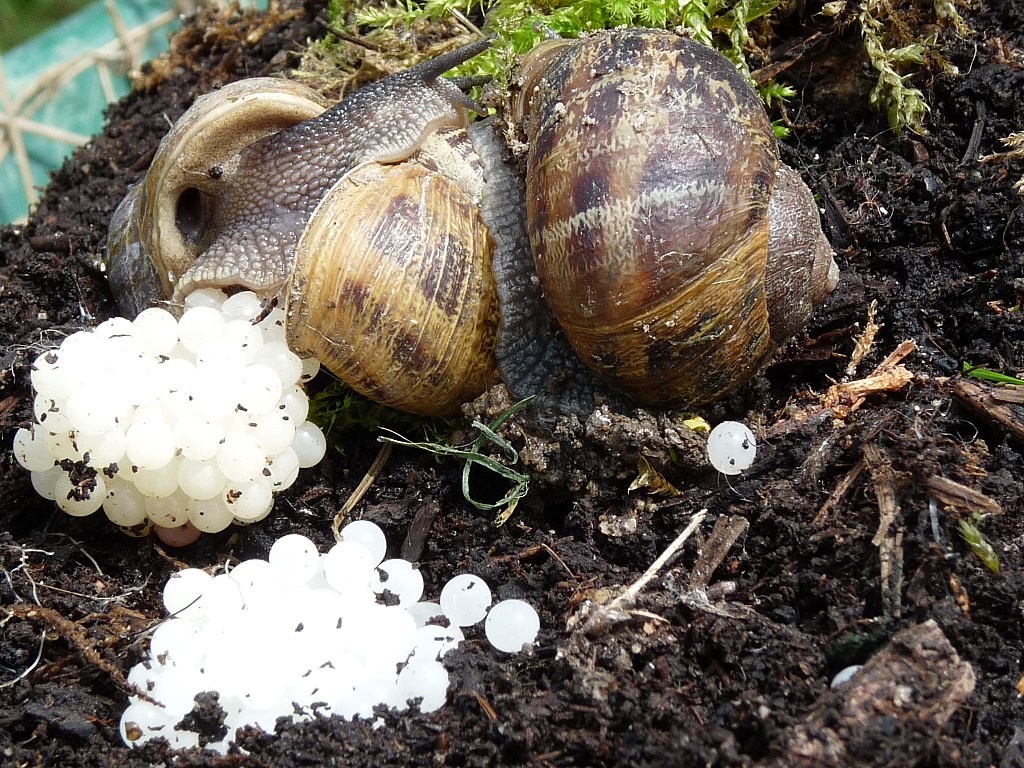
Two snails reproducing on the soil with eggs. Image source
If you want to keep them away without chemicals, besides planting the right plant in the right place, placing sharp objects at the bottom of plants as mulch can help because slugs aren’t able to crawl over sharp objects.
A couple of great options are monkey puzzle conifer branches which have sharp leaves, or the kind of rose branches that have a lot of thorns. For best results there shouldn’t be enough space for slugs and snails to slide between sharp objects.
Salt can also be used to deter molluscs but this is an incredibly cruel option because it kills the poor organisms very slowly and painfully. It can also mess with the overall soil chemistry which can have negative effects for our plants and other soil organisms.
While there are sea snails that are edible, it’s a good idea to avoid eating any snails or slugs that you catch in the wild because they can carry serious diseases.
Insects
The Arthropod (meaning jointed leg) phylum is a big clade (clade= any grouping, whether that’s kingdom, phylum or genus) that includes a lot of invertebrates we know and love that have exoskeletons, including but not limited to crustaceans, arachnids, myriapods, and of course insects.
The insect class (Insecta) includes but is certainly not limited to moths, bugs, cockroaches, lice, ants, beetles, and fleas, all of which have members that spend at least part of their life beneath the soil’s surface.
In fact, so many more insects spend time under the soil than we might think, whether that’s in their infant (larval) life forms or as part of their daily adult life.
Ants, of which there are many species that spend a lot of time underground, are a fantastic example of how insects are beneficial for soil structure. It’s incredible the amount of soil they can move to make their tunnel systems, which provide pores for air and water within the soil.
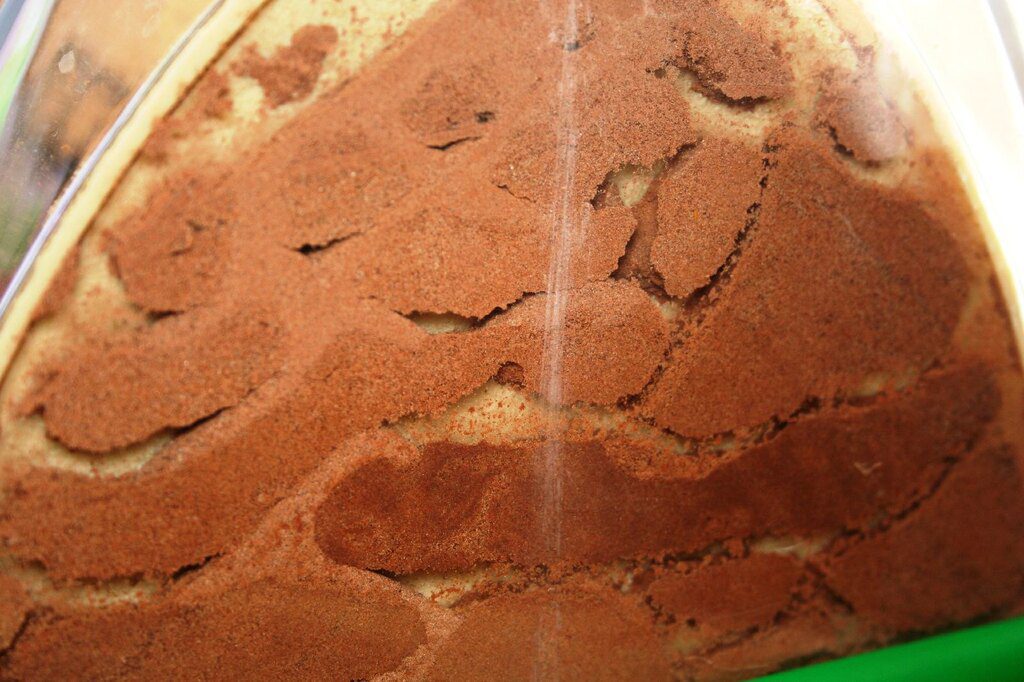
Here is a photo showing the tunnels made in an ant farm, which shows us what ants are doing for soil structure beneath the surface. Image source
When these tunnels collapse, like when we drive our car over the soil and compact it, the ants will do their best to rebuild them which helps to heal the soil structure.
The larval forms of some insects feed on plant roots in the soil, such as the dreaded “lawn grub”, which leave large dead patches in lawns. We can call this type of insect a soil “pest”
If you have lawn grubs, they could be one of a number of different offenders including the army worm which is the larval form of a moth, Spodoptera frugiperda. You might see the moths flying around the grass if you have them.
Other insect pest eggs are often laid in the soil, even if they are known to feed on the plant parts above, like leaves, flowers and bark.
Predator insects may move in to eat the adult pests that are above the ground, but not all predators actually eat the eggs in the soil so the pests may keep coming back.
An increase in soil biodiversity increases the chances that the right sort of predators will be present to kill insect pests above and below the soil surface, at all stages of their lives.
Arachnids
Spiders, mites, and scorpions are all in the “Arachnid” class in a subphylum of arthropods called Chelicerata.
Many of these critters are predatory, but there are a number of mites that are plant sucking pests such as spider mites. There are also predatory mite species that eat up pests such as their spider mite relatives as well as a variety of insects.

The giant red velvet mite is a viscous predator that sucks the juice out of fellow mites, insects and other arthropods. This one seems to be sinking into some sand. Image source
Some arachnids are pests for humans such as poisonous spiders and ticks. Removing pests that are dangerous for human health in our homes and gardens may be appropriate in order to keep us safe.
Some people think that any spider they see is a pest and this simply isn’t true. As long as they aren’t making cobwebs in your house, there’s no reason to attack any old spider you see in the garden or out there in the world.
Myriapods
Centipedes and millipedes are in a subphylum of arthropods called Myriapoda.
Most common in rainforests and other moist regions with high amounts of organic matter, myriapods are great organic material deconstructionists.
Centipedes are usually carnivorous and feed on a varied diet including insects, arachnids, earthworms and other myriapods. They do have their predators like birds and lizards, but there are some seriously aggressive species that have been known to burrow out of the bellies of the animals that eat them.
There’s no reason to hate centipedes just because they feed on many of our favourite soil organisms, like worms, because predatory organisms are just a part of life. Their presence indicates that there are plenty of lower organisms for them to feed on, so they are a good sign.
Millipedes are the close relatives of centipedes, and although they prefer dead plant material, if soil conditions become dry these critters may start to look to living plant tissue as a food source instead.
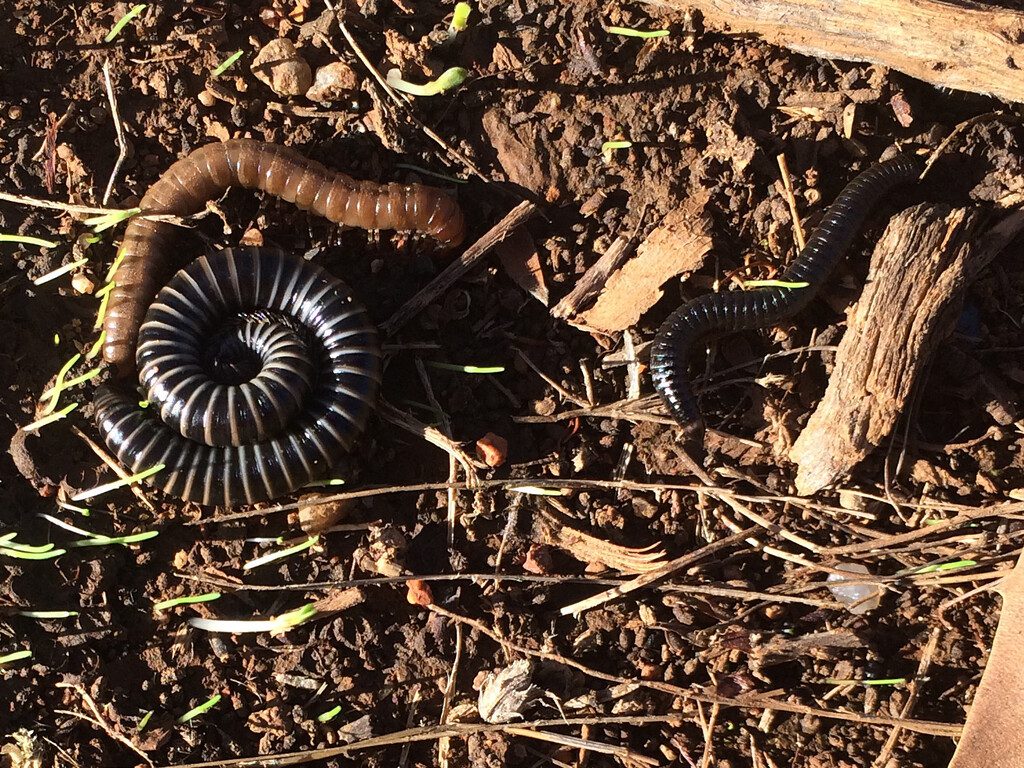
Three types of millipedes hanging out on this clayey soil surface, though they spend a lot of time beneath as well. These guys probably feed on dead plant material. Image source (image edited by Plants Grow Here to remove shadows slightly, as allowed under license)
A cool fact about centipedes and millipedes is that a few species are bioluminescent, meaning that they produce their own light.
Nematodes
If you’ve ever grown fruit and veggies, you may have encountered the type of nematode that is known to feed on the roots of plants, reduce yields and even kill plants.
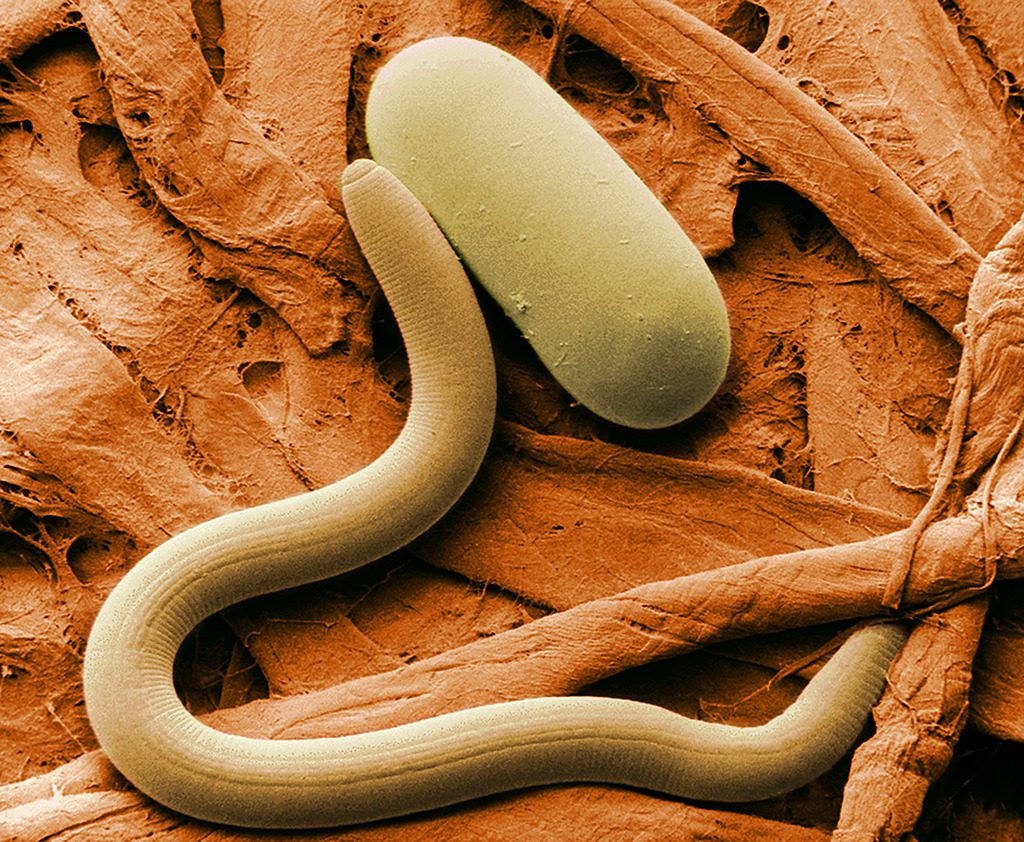
This soybean cyst nematode pest with its egg is so tiny that this photo had to be taken with an electron micrograph which is a machine used to view microscopic things like plant and animal cells. Image source
But nematodes, of the phylum Nematoda, aren’t all bad! Just like other variations of life form, members of the Nematoda phylum come in all sorts.
Yes, there are some that are pests, but there are also some that break down already-dead organic matter and others that eat their nematode pest relatives as well as preying upon all sorts of other pests.
Beneficial nematodes are able to be purchased as part of an integrated pest management approach. You can read more about IPM through my blog post.
Bacteria
Bacteria are in a kingdom of their own consisting of single-celled primitive organisms that can reproduce incredibly quickly. Some species explode in numbers and then die off again all within the space of a few days.
Some are robust and able to withstand large changes in the environment, whereas others are much more sensitive and can be easily wiped out.
As the most abundant microbe in the soil, bacteria are a nutrient-unlocking powerhouse.
Not only do they break down organic matter, they even assist with breaking down minerals, meaning that they literally break down rocks and release the tiny pieces that are useful to plants and other organisms.
Some help break down chemicals like fertilisers and pesticides, so a healthy, living soil will more easily be absolved of the sins of the past. Others assist with plant growth, or defend plants against pathogens, or have anti-fungal properties.
Legumes form a symbiotic relationship with bacteria called rhizobia that colonise this plant family’s roots and help them fix nitrogen from the air that then makes its way into the soil when the plant breaks down.
Other types of bacteria are known to help in arid (desert) environments where plants find it hard to get a grip. “Cryptobiotic” soil contains a type of bacteria that forms a crusted ground cover that prevents the topsoil from being eroded by the wind, which can devastate an environment. Not that you would really call this sort of soil situation “healthy”.
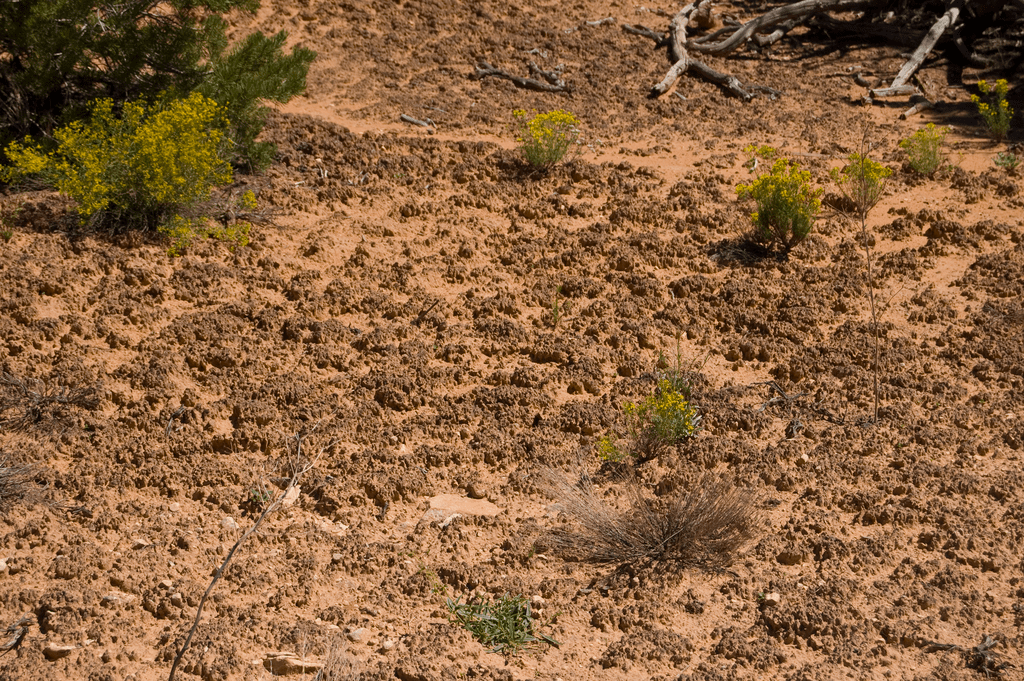
Here we have a crusted cryptobiotic clayey soil colonised primarily by bacteria, with some plants and lichen also visible. Image source
Fungi
It’s crazy to think that many gardeners still associate fungal organisms in the garden only with plant problems, and they’re more than happy to slap a fungicide onto any plant that looks at them funny.
In modern gardening practices, we understand that the fungal kingdom consists of more than just pests and pathogens; among their ranks are some of the most integral plant symbiotes that exist on Earth.
Mycorrhizal fungi (myco=fungi, rhizal=root) are fungal species that colonise plant roots and feed off carbon the plants willingly give up in return for a range of services that the fungi provide, including delivering nutrients and acting as an intermediary between other plants during nutrient exchanges and other forms of communication.
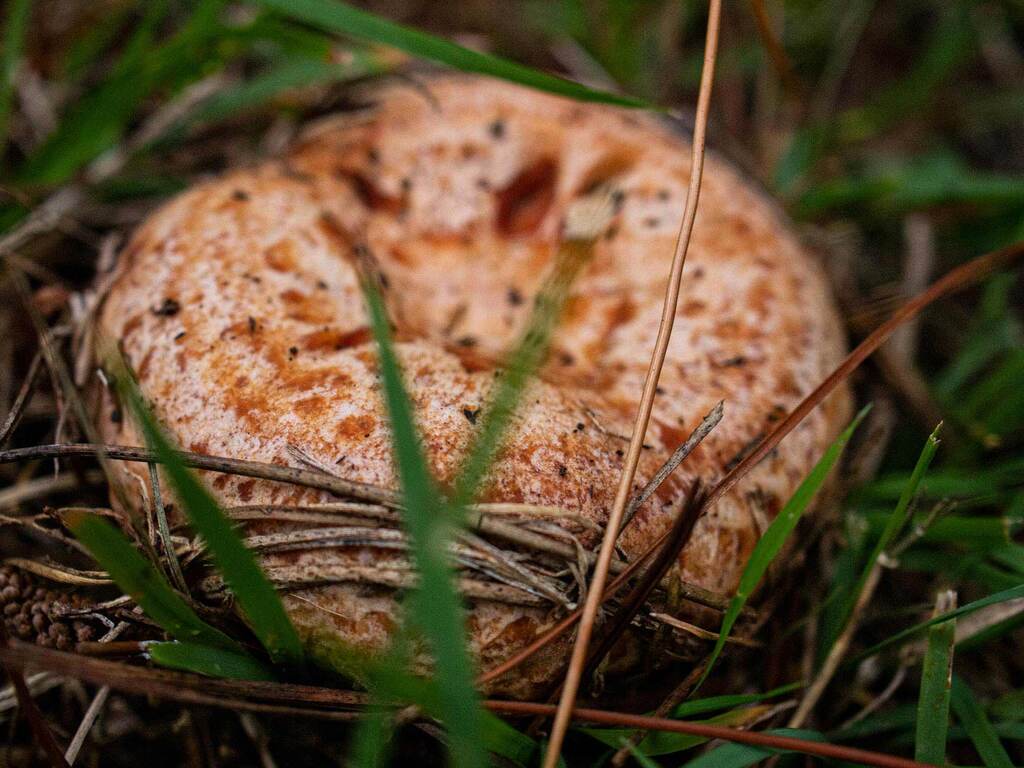
A saffron milk cap poking through the grass and pine needles from a mycorrhizal network that’s associated with conifer plants. It was introduced to Australia along with pine trees that Europeans brought over long ago. Photo via Plants Grow Here.
Other fungal organisms help break down organic matter like leaves and wood chips. They are present within compost and natural mulches.
Some fungi send off fruiting bodies that come in a range of shapes and sizes, including but not limited to mushrooms, whereas other fungi don’t seem to produce fruiting bodies at all.
Soil Structure
All of this activity going on beneath the surface is creating a lot of texture beneath the soil.
In order for there to be a lot of living creatures moving about in the soil, there will probably be a lot of decaying organic matter for them to feed on. This dead material that is food for living organisms also provides structure by acting like a glue that sticks the soil particles together to form “aggregates”.
The organisms are eating what’s in the soil and pooing it back out, as well as acting as architects and builders of intricate tunnel systems as they go about their short lives. These architectural systems in the soil provide air pockets, water drainage and compaction resistance.
You can read about why structure is integral to healthy soil through my “What is Healthy Soil & How Do We Build It” post that I linked to in the introduction of this article.
Soil Temperature
All organisms have their own temperature preferences, from bacteria to animals. The same types of organisms that are present in tropical climates are not always present in colder regions.
Having a fire or dumping ice on the soil can cause damage to the soil ecosystem. If it’s just a little fire or an Esky’s worth of ice the soil will bounce back, but it’s possible to do real damage with temperature if we aren’t careful.
An old trick to get rid of tree root systems is to slowly pour oil or diesel fuel onto/into the stump so that the whole system soaks it up through the vascular system. Then the stump is lit which results in the whole system, stump and roots, burning like a candle wick which will obviously have an effect on soil-dwelling organisms
You can read more about vascular systems through my article to see how it’s possible for the oil can penetrate the whole plant system.
pH
Similar to temperature, all organisms have their own pH preferences. Some are able to withstand a wide variation and are present in both acidic and alkaline conditions, whereas others are much more sensitive to smaller changes.
Pesticides & Herbicides
Chemicals that we use to kill pests have a wider effect than just killing those organisms we want to die, especially systemic ones that enter the plant’s system from leaf to root.
Insecticides, fungicides and bactericides wreak absolute havoc on the soil and should be avoided at almost any cost.
They often have unintended consequences, such as earthworms fleeing with copper usage in an attempt to kill pathogenic fungus, which would also kill beneficial fungus.
Some organisms may return in time after usage, but some are lost permanently.
Herbicides also have an effect, at least in as much as killing a plant changes the soil. They may also kill other organisms than just plants.
A build-up of any chemical can have a negative effect on the soil, so limiting chemical use is always best practice.
Water-Soluble Fertilisers
The organisms present in soil work hard to convert the organic matter into nutrients that plants can access. It’s a slow process, but everybody benefits.
When we introduce water soluble nutrients, suddenly nobody has to work as hard any more.
Water-soluble fertilisers are those options where nutrients easily dissolve into the water, such as the artificial slow-release fertiliser pellets that provide cheap nutrients without feeding the soil.
Other water-soluble fertilisers can be organic, like a good old liquid fish and seaweed fertiliser mixture.
Microbes and plants can simply drink what they need right there and then without effort when we use fertilisers like these.
Why would a plant trade its precious carbon with mycorrhizal fungi that have colonised its roots in return for nutrients, when instead it can simply drink the nutrients straight from the moisture in the soil?
This change in supply and demand can have a devastating knock-on effect for the web of life as some organisms are made obsolete.
This isn’t a case for the removal of liquid fertilisers, especially organic ones, but instead we might give them to our plants as a special treat instead of using them for our plants’ “bread-and-butter”.
A fish-seaweed liquid mixture is a beautiful thing to pour over plant leaves and roots on occasion, we just don’t want our plants to rely on them so much that they stop relying on beneficial microbes.
Compaction
Most soil organisms need a bit of room to move around, and when the soil’s compacted they can struggle a bit.
If the soil is thriving with a lot of activity, the microbes and larger organisms will help resist compaction, or at least repair it because they’re constantly moving the soil around and making air pockets. It’s kind of like how you squeeze a pillow flat but it slowly returns to its previous fluffiness.
Once the compaction reaches a certain level, however, organisms will decline and their ability to amend the problem will be reduced.
Types Of Vegetation
For the most part, soil organisms like to have a roof of vegetation, living or dead, over the soil surface. This could be grass, shrubbery, mulch or even a layer of annual plants that are dying off for the winter.
When you till the soil and change the roof over their heads, many types of organism will struggle and certain organisms that can withstand this will get the upper hand.
The types of plant roots you have in the soil determines what sort of soil organisms you’re likely to have. Land that contains predominantly native vegetation will be more likely to have a higher percentage of native organisms.
Land with mostly introduced plant species will almost definitely have a lot of native life in the soil, but it will also have a lot more introduced organisms than land with only native vegetation.
Saffron milk backs are edible mushrooms coming from a mycorrhyzal fungus associated with conifers from Europe. They were introduced to Australia when Europeans brought conifer trees over from their home land.
It’s believed that the more variety of vegetation you have, the more biodiverse your soil will be and this makes sense seeing as different plants form different relationships with different organisms.
Instead of nuking the weeds around our properties, is there any way that we can allow them to grow?
If we wait to remove the weeds that grow in our veggie patches until they actually impede our growing crops, the plants and soil will be better off as long as we’ve fertilised correctly with organic matter. You can read more about fertilising correctly via this post I wrote.
Allowing weeds to grow is a similar concept to having a crop rotation or “break crop”, which is a practice used by farmers where they avoid planting the same crops alone, year after year, which encourages the plant’s worst pests to thrive long-term.
Many weeds are edible and delicious, or they can be used for compost when they start getting in the way.
If the soil structure is good deep into the soil, roots can reach deeper. It’s easier to restore good soil than it is to restore very poor soil, because if the soil profile is poor, time is needed for colonising plants to begin the process of building the structure back again with their beneficial organic friends.
Opportunistic weeds are an example of colonising plants that tend to show up when other plants aren’t occupying a spot.
Deep roots from trees help to pull water up from beneath the soil to where it can be accessed by other organisms and plants. Dead roots are food for organisms and continue to provide drainage for long after the tree has “given up the ghost”.
Roots don’t have to be deep or dead to be useful though; all plants play their part, in life and in death, even the little ones!
The Cost Of Traditional Tillage
Tilling is a method of cultivating the soil where tools, like a turning fork or heavy machinery are used to turn over the top part of the soil. This loosens the soil and allows for the easy addition of organic material.
All methods of cultivating the soil affect its resident organisms as well as the soil structure itself.
This benefits certain organisms and disadvantages others, because some critters are better at withstanding conditions where the soil is turned over.
For example, bacteria and mites tend to do well when the earth is turned, and so can harmful nematodes. However, worm numbers can be decimated and beneficial fungal networks can be broken apart.
When we till the earth, it’s similar to turning a compost pile: it makes the breakdown happen more quickly.
There’s a lot of aerobic (oxygen-related) bacterial activity that burns up organic matter quickly. This may mean that your plants get a short-term boost, but what’s happening is that the organic matter that’s there will be used up more quickly like a fast-burning fire.
This in itself isn’t such a bad thing if you’re adding more organic material each time you till, but what will happen is that you train the soil to house only certain organisms, and others will disappear.
We’re always altering which organisms are favoured in our soil with every choice we make, however no-till gardens that fertilise from the top (without tilling) encourage a wider variety of life than tilled gardens.
With all this being said, there is still a strong case to be made for tilling under certain circumstances.
It’s an especially good practice o get organic compost into the soil when it’s really unhealthy, for example if it’s slaking, hydrophobic or crusted. There probably aren’t too many organisms present for you to lose in this case anyway.
It may also be a good method on a farm that has a lot of hard-to-remove weeds, because tilling can uproot weeds and dump them back into, or onto, the soil to break down slowly.
Do Beneficial Organisms Have To Be Native?
In a perfect world, all ecosystems would be stable.
Of course native organisms are preferential over introduced species, just as native vegetation is preferable to introduced plant species. The only problem is that the cat’s totally out of the bag and introduced species are everywhere now.
We have to focus our efforts intelligently: some introduced species aren’t worth our time to fight, but some destructive introduced pests must be dealt with because they can be incredibly damaging to the ecosystem as a whole, such as cane toads in Queensland which outcompete native species and have been blamed for the extinction of native predators such as the northern quoll due to their toxicity.
Since the integration of cane toads into the environment, predators have learnt to leave them alone or have become resistant to their poisonous compounds they create and store in pustules on their backs.
It’s common for people, especially in rural areas, to go on cane toad murder sprees which isn’t as unethical as you might first consider because A) this animal is detrimental to the ecology, B) it has no serious natural predators in Queensland, and C) native crows have learnt to flip dead toads on their backs to avoid the poison in their backs so they can safely feast from their bellies meaning the toad’s body is not wasted.
Even if crows don’t eat them the toad bodies aren’t wasted because other organisms will always eat them, such as insects and bacteria, and their dead bodies will eventually end up back in the soil.
With that being said, it’s only a matter of time until any gaps in the food web “market” created by species that go extinct are filled through a process of evolution that’s been going on since the beginning of time. Nature wants to move toward stability but exists in a state of constant change because hey, it’s not a perfect world.
When the first flowering plants appeared on earth, they decimated the existing plant life which simply could not keep up with the fact that angiosperms had recruited pollinators to help them reproduce. Change is not always bad.
You can read my short post on the difference between flowering plants and the more primitive plant relatives they surpassed below.
Conclusion
The activities going on beneath the soil are far more complex than what we can go through in a simple blog post.
The web of activity going on is incredibly intricate and complicated and as much as modern soil scientists have already observed going on down there, it’s safe to say that the soil still holds a mystery or two up her sleeve even from them.
By encouraging a wider variety of life forms in our soil, our plants are better equipped to deal with the harshness of the world, including the dangers presented by so-called “pests”.
How do we encourage these organisms?
We provide them with what they want of course! Everything that we’ve been talking about in this article contributes to building a happy home for little soil-dwelling critters.
Don’t worry too much about introducing species yourself, unless it’s part of an Integrated Pest Management system or you’ve found some good professional advice to do so. If you build healthy soil, the beneficial organisms will come on their own!
Where To Next?
If you’re still hungry for more info, I have a few more articles that I recommend with this one as a jumping off point. For starters, if you haven’t read my soil article I would start There as it’s chock-a-block full of information that will help round out what you’ve just learnt here.
